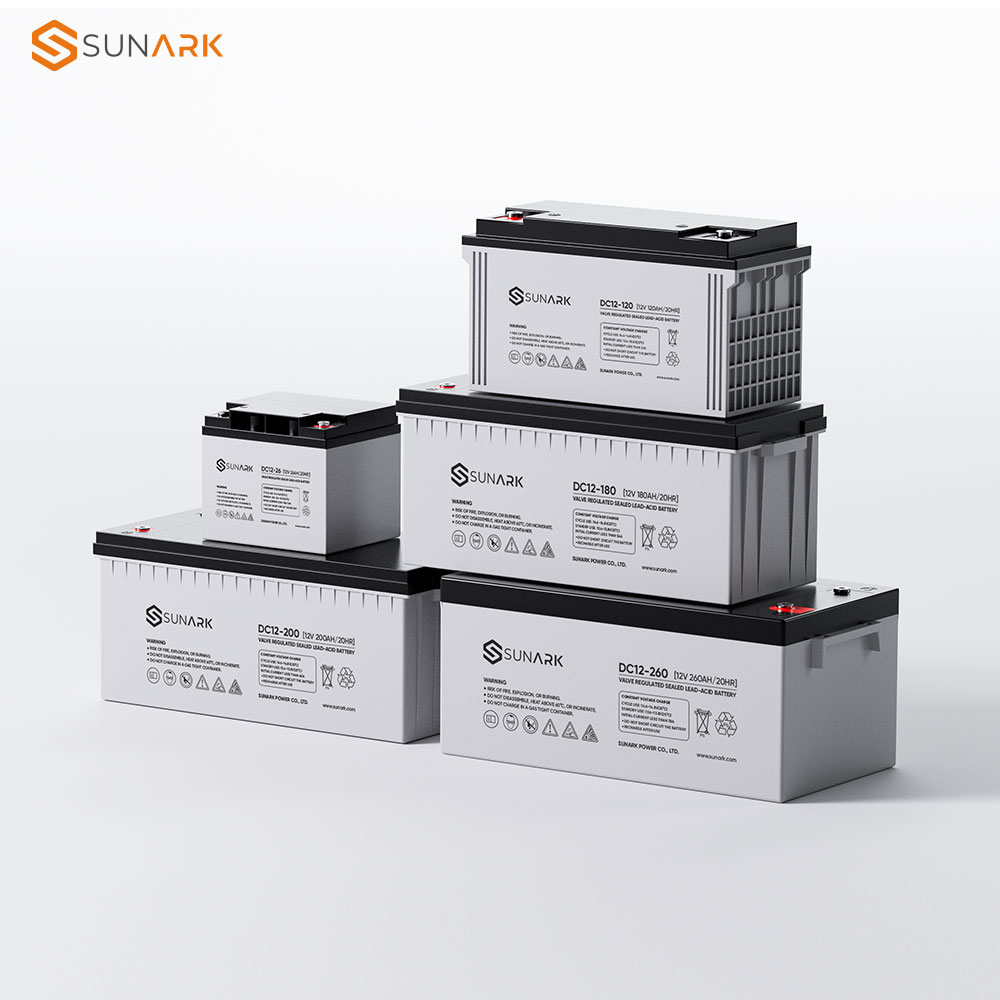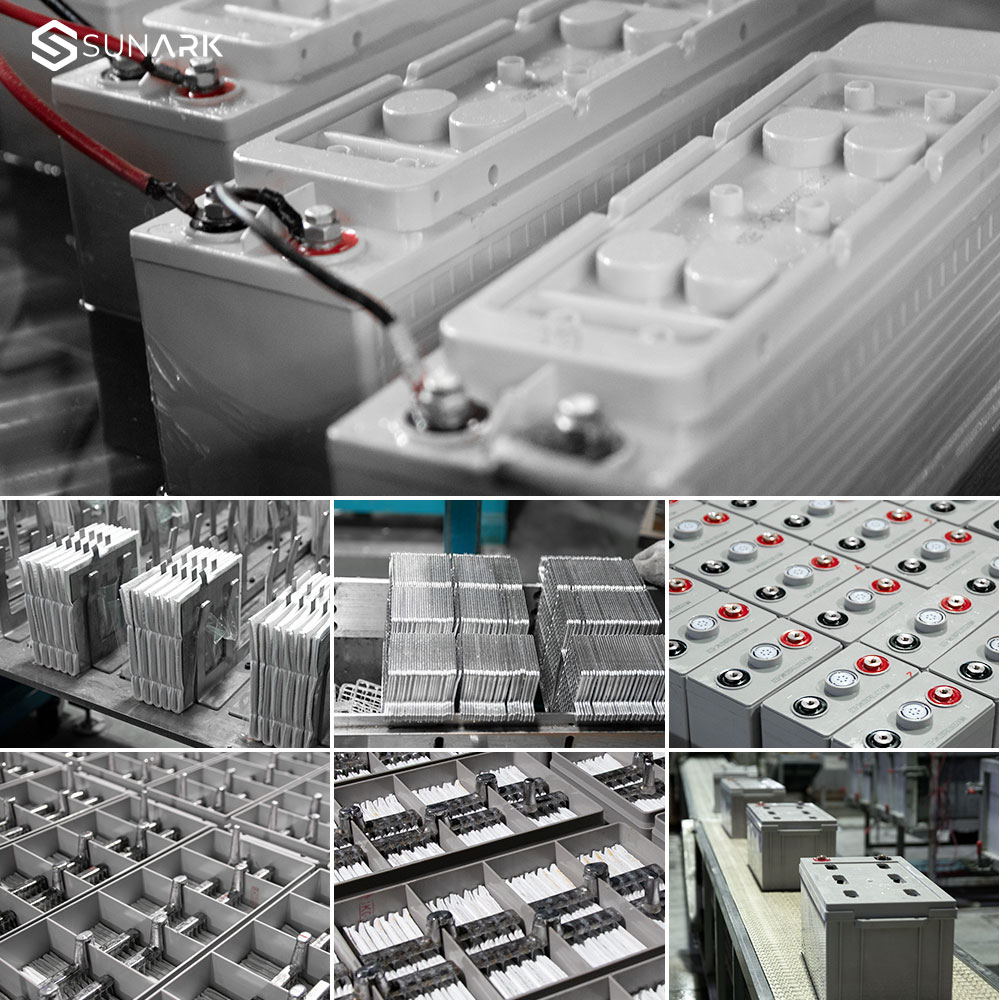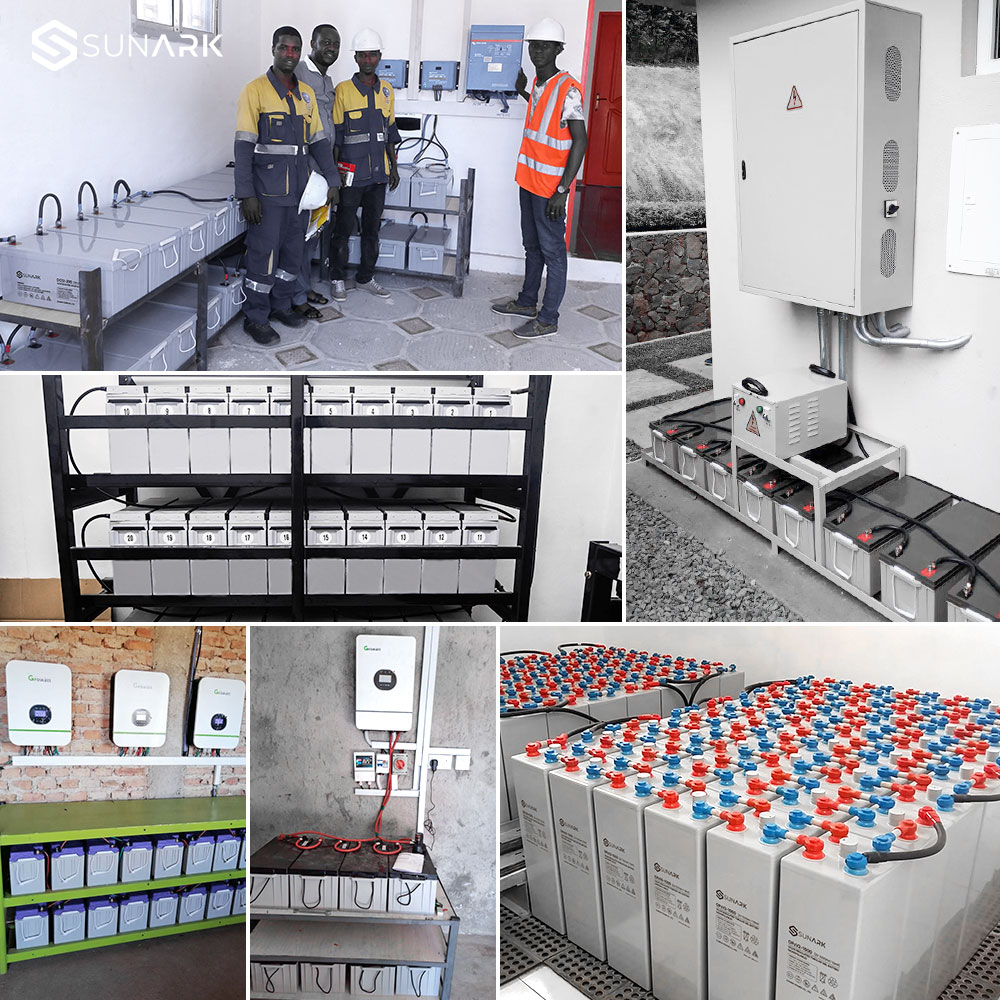SunArk deep cycle AGM series lead acid batteries has combined of good quality and free OEM advantages to the market, which has a design life more than 20 years, and 5 years warranty period.
AGM batteries are commonly used in a variety of applications, including automotive, marine, and renewable energy systems.
Cells Per Unit:
6Voltage Per Unit:
12VDesign Life:
20 years (Float charging)Standby Use Voltage:
13.6V~13.8V @25°CCycle Use Voltage:
14.2V~14.4V @25°COperating Temperature Range:
Discharge: -15°C~50°C Charge: 0°C~40°C Storage: -15°C~50°CNormal Operating Temperature Range:
25°C ± 5°CSelf Discharge:
Monthly Self-discharge ratio is less than 3.5% at 25°C.Container Material:
A.B.S. UL94-HB UL94-V0 OptionalThe lead-acid battery market has been significant and widely used for several decades, especially in applications such as automotive, uninterruptible power supply (UPS), telecommunications, and renewable energy storage. Among the various types of lead-acid batteries, AGM (Absorbent Glass Mat) batteries have gained popularity due to their improved performance and maintenance-free characteristics.
AGM batteries are sealed batteries that use a fiberglass mat as an absorbent separator between the lead plates. The mat is saturated with electrolyte, which allows the battery to be operated in any position without the risk of electrolyte leakage.

Here are some key characteristics and features of lead-acid AGM batteries:
Automotive sector: AGM batteries are widely used as starter batteries in vehicles, including cars, trucks, motorcycles, and marine applications. The increasing demand for vehicles, particularly hybrid and electric vehicles, has driven the growth of AGM battery usage in this sector.
Backup power systems: AGM batteries are commonly used in UPS systems to provide emergency power backup. With the growing reliance on uninterrupted power supply in various industries, the demand for AGM batteries in this sector remains strong.
Telecommunications: AGM batteries are extensively used to power telecom infrastructure, including cellular towers, base stations, and data centers. The expansion of telecommunication networks, especially in developing countries, contributes to the demand for AGM batteries.
Renewable energy storage: AGM batteries are employed for storing energy generated from renewable sources like solar panels and wind turbines. As renewable energy installations increase worldwide, the demand for AGM batteries for energy storage is expected to rise.

The market for lead-acid batteries, including AGM batteries, is also influenced by advancements in battery technologies, such as lithium-ion batteries. While lithium-ion batteries have gained popularity in certain applications, lead-acid batteries still dominate due to their proven reliability, lower cost, and well-established infrastructure.
It's worth noting that market trends can change over time, influenced by technological advancements, environmental regulations, and evolving consumer preferences. Therefore, it's important to refer to the most up-to-date market research and analysis to get a comprehensive understanding of the current status and future prospects of the AGM market.

You will typically find the following components:
Lead Plates: AGM batteries have positive and negative lead plates that are placed in a grid-like pattern. These plates are made of a lead-calcium alloy, which helps improve the battery's performance.
Separator: AGM batteries utilize a fiberglass separator mat that is positioned between the positive and negative plates. The separator is designed to absorb and hold the battery's electrolyte solution, preventing it from freely flowing between the plates.
Electrolyte: The electrolyte in an AGM battery is a sulfuric acid solution that is absorbed into the fiberglass mat. The absorbed electrolyte enables better contact between the plates, improving the battery's efficiency.
Absorbent Glass Mat: AGM batteries derive their name from the absorbent glass mat. This mat acts as a separator and is responsible for holding the electrolyte close to the plates. The mat is made of thin glass fibers that are highly porous, allowing for high electrolyte saturation and better electrical conductivity.
Valve: AGM batteries are often classified as valve-regulated lead-acid (VRLA) batteries. They feature a pressure relief valve that helps regulate the internal pressure of the battery, allowing for the controlled release of excess gases that are produced during charging.
Casing: The components of an AGM battery are housed within a durable and sealed plastic casing. The casing is designed to be leak-proof and impact-resistant, ensuring the safety and integrity of the battery.
FAQs:
Q1: Do you support OEM/ODM?
A:Definitely, OEM&ODM service is supported with a certain quantity,including customize logo,package and label;
Q2: What's the production time?
A: The production time is normally 15 working days. but we will always prepare some stocks for popular models.
Q3: Can you provide DDP service?
A:Yes, if you are a personal customer and don't want to deal with the customs, we can provide DDP service to your address.
Q4: What about the warranty and how to claim?
A: Warranty period are 10 years since you receive the product, our professional after-sales team will deal with all warranty issues.